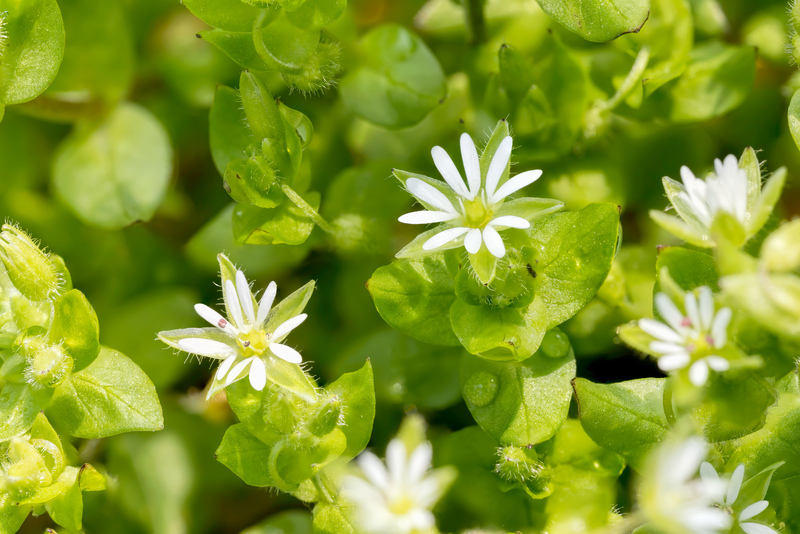Keep Your Garden Vibrant with These Winter Protection Tips
Posted on 17/09/2025
Keep Your Garden Vibrant with These Winter Protection Tips
Gardening is a year-round passion for many, but winter's icy grip can transform a flourishing landscape into a barren view. However, your dream of a vibrant winter garden doesn't have to fade with the temperature. With the right winter garden protection tips, you can preserve your plants and keep your backyard beautiful all season long.
Why Winter Protection Matters for Your Garden
The cold months bring a host of challenges: frost, biting winds, snow, and less sunlight. These factors can stress or even kill sensitive plants. By implementing winter garden protection strategies, you provide your plants with the care they need to survive and even thrive, ensuring a vibrant garden both during and after the winter.
- Prevents Frost Damage: Frost can kill delicate plants. Protection measures minimize exposure and heat loss.
- Retains Soil Moisture: Mulching and other techniques help soil conserve its essential moisture.
- Reduces Plant Stress: Protective methods ease sudden temperature fluctuations and freezing winds.
- Guards Against Pests: Winter doesn't stop pests entirely; some overwinter and target weakened plants.

Essential Winter Garden Protection Tips
Your garden can stay colorful and healthy all winter with a combination of preparation and the right protective measures. Below, you'll find key tips to keep your outdoor haven vibrant until spring returns.
1. Begin with Thorough Garden Cleanup
Before winter arrives, clean up garden beds by removing dead plants, spent annuals, and fallen leaves. This not only tidies the space but also lowers the risk of pests and diseases overwintering. Compost healthy plant debris and dispose of anything diseased to prevent its spread next season.
2. Nourish and Prepare the Soil
Winter garden vigor often depends on healthy soil. Add organic matter such as compost or well-rotted manure in late autumn. This feeds soil organisms and improves fertility for spring. Also, consider conducting a soil test; adjust pH and nutrient levels as needed before the ground freezes.
3. Prune with Care
Prune most perennials and shrubs lightly, but avoid heavy trimming right before winter, as it could encourage new, tender growth vulnerable to cold. Remove dead or diseased branches to protect plant health. Some shrubs, like hydrangeas, shouldn't be pruned in the fall, so always check specific plant recommendations.
4. Mulch for Warmth and Moisture Retention
Mulching is one of the best winter protection tips for your garden. Apply a 2-4 inch layer of mulch over garden beds, around trees, and over the root zone of shrubs. Mulch insulates soil, retains moisture, suppresses weeds, and regulates temperature swings.
- Use organic mulch such as shredded bark, straw, leaves, or pine needles.
- Keep mulch a few inches away from stems or trunks to prevent rot.
- Replenish mulch as needed throughout the winter.
5. Protect Tender and Young Plants
Frost-sensitive annuals and young perennials need extra care. Consider these methods:
- Row Covers: Use floating row covers or garden fleece to protect beds overnight or during cold snaps.
- Cloches: Glass or plastic cloches act as mini-greenhouses for individual plants.
- Cold Frames: For winter vegetable gardening, cold frames give crops like lettuce or spinach a fighting chance.
- Burlap Wraps: Encircle delicate shrubs or evergreens with burlap to shelter against drying winds and heavy snow.
6. Water Wisely Before the Freeze
While plants need less water in cold weather, hydrated soil retains heat better than dry soil. Deeply water garden beds before a hard freeze sets in, especially for new plantings. Reduce watering as temperatures fall, but don't allow soil to go bone-dry.
7. Shield Container Plants
Container plants are particularly vulnerable, as their roots are more exposed. For optimal winter garden protection:
- Move pots close to a building for shelter from wind and warmth.
- Cluster containers together for mutual protection.
- Wrap pots with bubble wrap, burlap, or old blankets.
- For extra protection, sink containers into the ground and mulch around them.
8. Use Windbreaks for Protection
Wind can desiccate leaves and cause soil erosion. Create natural or artificial windbreaks to shield vulnerable garden areas:
- Install temporary barriers like snow fences or screens of burlap attached to stakes.
- Plant evergreen shrubs or trees as long-term windbreaks.
- Arrange straw bales to protect low garden beds.
9. Prevent Animal Damage
Wildlife like deer, rabbits, and voles may nibble on garden plants when food is scarce. Take preventive steps to deter them:
- Use fencing suitable for the target animal.
- Apply commercial or homemade repellents to trunks and branches.
- Wrap tree trunks with guards to protect against gnawing.
10. Monitor and Maintain Throughout Winter
Winter protection isn't a one-time effort. Periodically check your garden:
- Look for heaved plants after freeze-thaw cycles and gently reset them.
- Brush snow off shrubs and trees to prevent breakage.
- Inspect for pest or animal activity and adjust barriers as needed.
- Reapply mulch or covers after heavy rains or high winds.
Beyond Survival: Adding Color and Life to Your Winter Garden
While much of the focus is on protecting plants, you can also plan for a vibrant winter garden that delights even in the darkest months. Explore these bold ideas:
Grow Winter-Flowering Plants
- Hellebores (Lenten Rose): Offer blooms in late winter to early spring.
- Witch Hazel: Produces fragrant, spidery flowers on bare branches.
- Camellias: Provide bright blossoms in mild climates during late winter.
- Winter Jasmine: Adds a yellow splash when little else is flowering.
Add Evergreens for Structure
Plant evergreens like hollies, pines, and boxwoods to create year-round interest and structure. Their bold shapes and green hues make the landscape come alive even on snowy days.
Use Decorative Features
- Install containers filled with colorful winter stems (dogwood, willow) or evergreen boughs.
- Add garden art, benches, or painted trellises for visual interest.
- String outdoor-safe fairy lights for cheer and nighttime beauty.
Planning Ahead: Winter-Proofing Your Garden for the Future
If you're committed to keeping your garden lively through winter, a bit of advance planning pays off hugely:
- Choose Hardy Varieties: When buying plants, select those well-suited to your climate and USDA hardiness zone.
- Design with Microclimates: Spot garden locations sheltered from prevailing winds or with south-facing exposures for extra warmth.
- Practice Crop Rotation: Move annual beds each year to reduce soil-borne pests and diseases.
- Install Permanent Windbreaks: Plant hedges or construct fences to break up cold gusts for good.
- Invest in Quality Mulch: Organic mulches improve soil over time and provide lasting protection.
Climate-Specific Winter Gardening Tips
Your approach to protecting your winter garden should reflect your local climate:
Cold Climates (Zones 3-6):
- Heavier mulching is critical; add up to 6 inches for tender perennials.
- Lift bulbs like dahlias or cannas and store them indoors until spring.
- Use sturdy plant covers and consider snow load when staking or supporting plants.
Mild Climates (Zones 7-10):
- Focus on drainage to prevent root rot from winter rains.
- Pay attention to rare frosts--use temporary covers as needed.
- Take advantage of winter planting opportunities for cool-season herbs and vegetables.
Dry/Arid Climates:
- Encourage deep-rooted plants and drought-tolerant varieties.
- Maximize mulch to conserve precious moisture and moderate temperature swings.

Quick Winter Garden Protection FAQs
- When should I mulch my garden for winter? Apply mulch after the first hard frost but before prolonged freezes set in.
- Should I fertilize before winter? Avoid high-nitrogen fertilizers late in the season, as they promote tender new growth. Instead, apply organic matter to improve soil.
- Can I protect my vegetable garden through winter? Yes. Use cold frames, cloches, or row covers for hardy crops like kale, spinach, and carrots.
- How do I prevent snow damage? Gently brush snow off limbs to prevent breakage; avoid shaking ice-covered branches as this can cause further harm.
Conclusion: Embrace a Vibrant Winter Garden
With these comprehensive winter garden protection tips, you can enjoy a landscape teeming with color, life, and structure all season long. By preparing early, selecting the right plants, and maintaining consistent care, you'll ensure your garden not only survives the cold but remains vibrant and beautiful--a soothing sight until springtime bursts forth once more. Don't let freezing weather steal your outdoor joy; safeguard your garden and let it shine through the winter months!
With a little extra effort and the practical know-how outlined above, keeping your garden vibrant during winter is entirely within your grasp. Start your preparations today, and your garden will thank you with splashes of green, pops of color, and the promise of new growth on the horizon.

